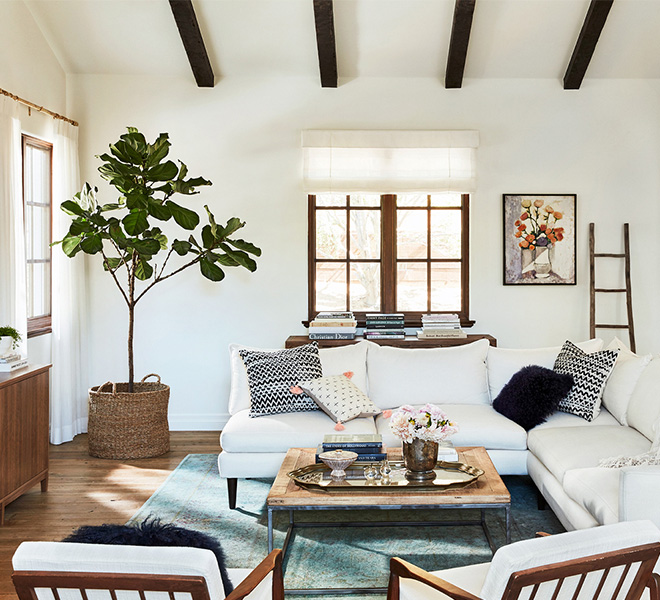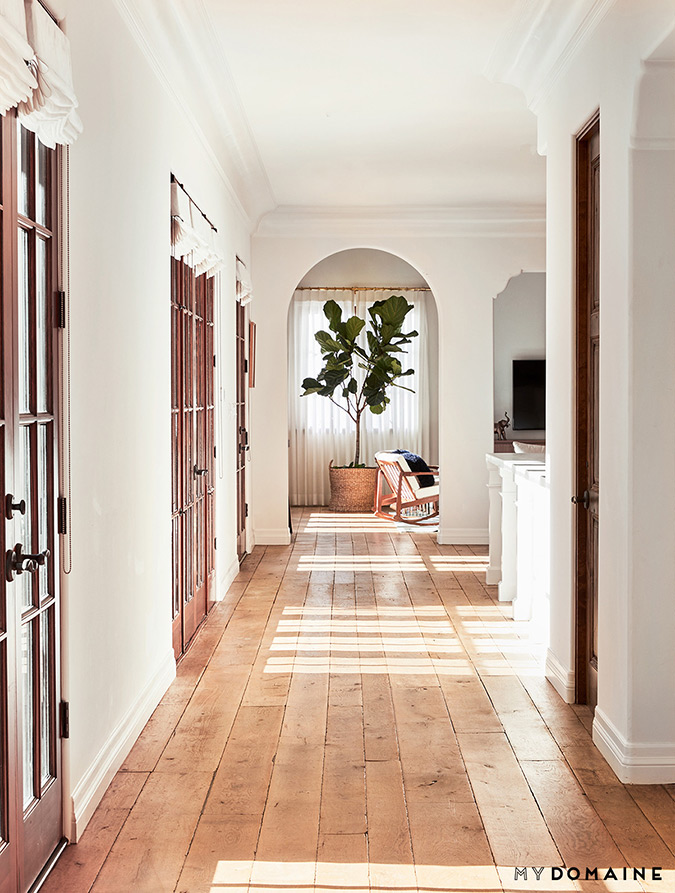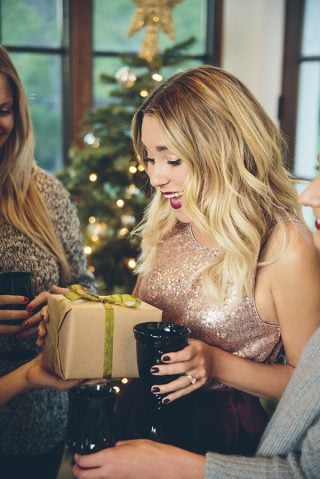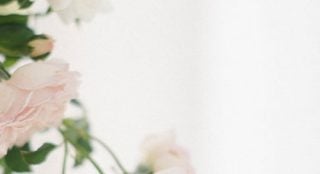Green Thumb: The Fiddle Leaf Fig Tree Guide

Several years ago, the fiddle leaf fig tree really solidified its role as a décor staple in the interior design world. If you don’t believe me, just take a quick scroll through Pinterest or any interior design Instagram account and I can guarantee you won’t go far without seeing this gorgeous plant. I personally have been growing them in my home for years now. I had a massive one in the living room of my Beverly Hills condo, several scattered around my former home in the Palisades, and I enjoy them in my current Laguna Beach house now too. I am pretty proud to admit that the longest one I’ve had lived for about eight years! Which is to say I’ve managed to keep these finicky indoor plants alive much longer than I expected I would. As much as I’d like to chalk it up to a proverbial green thumb, the truth is that I simply follow a few steps that I’ve researched over the years to keep my trees growing and the leaves looking a healthy, shiny shade of green.
Today I’d like to share some of those tips for growing your own gorgeous and healthy fiddle leaf fig tree. I’ve tapped plant shop owner and green thumb enabler Mackenna Rowley of Piep Co to share her expert tips with us, many of which happen to be the same ones I’ve relied on for years (but there are a few great secrets to success in here too!). Here’s what you need to know before taking the fiddle leaf fig tree plunge…

1. Give it the proper amount of water.
Mackenna recommends keeping this rule of thumb in mind when it comes to watering this plant: It’s better to underwater than overwater! She recommends allowing the top 1-2 in of soil to dry out between watering and strongly recommend bottom watering your fiddle. “The problem a lot of our customers have, especially with larger plants, is that they see it start to get brown and dry, water it from above,” says Mackenna. “But doing this never really saturate the potting mix. Then they keep watering more and more, resulting in an overall underwatered plant that also has root rot in places.” Potting mix is slightly hydrophobic, so when you water from above, it’s easy for the water to just trickle down the path of least resistance and not actually fully saturate the root ball—especially with big plants in large pots. You will always want to fully saturate your potting mix when you water, so Mackenna recommends placing your fiddle in the tub with water about half way up the pot and leave it overnight so the potting mix can wick up the water completely. It gets a nice extra dose of humidity that way as well. Underwatering and too little humidity generally causes crispy, dry leaves, and overwatering generally causes soft, yellow leaves.
2. Shed some light.
While it can feel natural to only consider décor and aesthetics when choosing which corner to place your tree, its positioning should be given much more thought. I’ve come to realize that lots of bright, indirect light makes my trees very happy. Mackenna notes that until it’s a fairly mature tree (and that takes a decade or more), you’ll want to keep it out of any direct light. So, if you think that giving your tree a little sunbath on your balcony or patio is good for it, think again… At least until it’s old enough. The leaves can get dry and brown when it’s getting direct light. I recommend placing yours by a window that has a lot of soft, indirect light. And, take into consideration which direction that light is coming from: north-facing windows will get the least sun, east-facing window will get morning sun but not enough throughout the entire day and west-facing windows will get strong afternoon sun that may burn the leaves and dry out the plant. South-facing windows are best, as they will get just enough sun without it being too intense. It’s also important to note that your fiddle will grow toward the light, so be sure to rotate regularly to keep it symmetrical if that’s what you’re looking for.
3. Consider your potting mix and pot.
For your potting mix, you will want to use a high quality, well-draining potting mix. And, you will also want to make sure your pot has adequate drainage at the bottom. The FLF is susceptible to root rot, so you need to be sure it’s able to drain after you’ve watered. Plus, you can’t bottom water a pot without drainage holes! Mackenna’s recommendation is to leave your tree in its original plastic growing pot and slip it into a slightly larger decorative pot or basket (I love using these from The Little Market). It makes it a lot lighter to carry when you’re hauling it off to the tub, and growing plants always require adequate drainage. Plus, if you find a decorative pot you adore that doesn’t have drainage holes and you don’t want to drill them yourself, you’re still able to use it!
4. Beware of wind.
FLF are fairly susceptible to drafts, so Mackenna recommends keeping yours away from doors or windows that open frequently, heating or cooling vents, fireplaces, or other draft-prone areas. Remember that FLF prefer some humidity, and drafts tend to lessen that.
5. Display it with style!
The fiddle is such a distinctive, sculptural plant that I prefer it in a simple pot or tucked into a woven basket. Why distract from those big, awesome leaves? If you want to add a little more pop to your pot, Mackenna recommends picking either a color or pattern—not both, which can get a little overwhelming because the pots need to be fairly large. Unless of course that’s your thing, and in that case… Go for it!
6. Keep it fresh.
One of my top tips is to clean the leaves regularly. As your plant grows, the leaves will become huge and gather lots of dust, which can actually inhibit growth because it blocks the sunlight. Mackenna recommends using a little coconut oil when you clean the leaves because it also adds some shine (a tip I had never heard of but love and am going to try myself!). However, be sure to only rub it on the tops of the leaves—using it on the bottom can clog the plant’s stomata and keep it from being able to breathe.
And there you go! Thank you again to Mackenna for these informative facts. Now, I’d love to know…
Are you going to add a fiddle leaf fig tree to your home?
Let me know below.
XO Lauren
Photos: Lauren’s Home in the Pacific Palisades; Justin Coit for MyDomaine
Affiliate links may have been used in this post.

